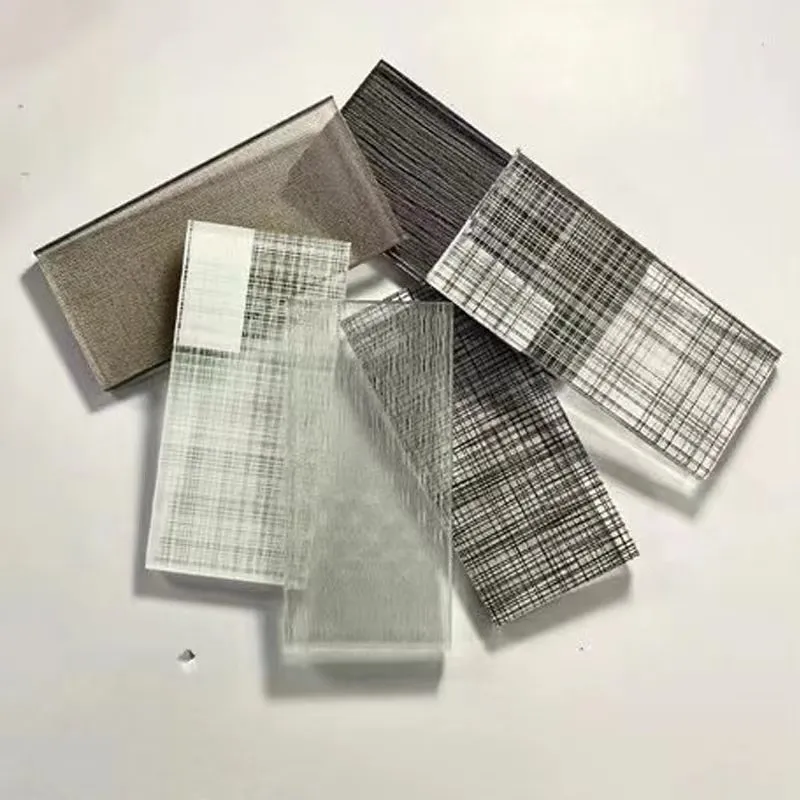Exploring Glass Acid Design A Fusion of Art and Science
In the realm of design, few materials capture the imagination like glass. Its versatility and aesthetic appeal make it a favorite among artists and designers alike. Among the myriad applications of glass, one particularly intriguing method is known as glass acid design. This innovative technique combines the elegance of glass with the precision of acid etching, resulting in stunning visual effects and intricate patterns that can transform ordinary surfaces into extraordinary works of art.
Glass acid design involves a process where acid is used to etch patterns onto the surface of glass. By applying a resist—often a vinyl stencil or a wax coating—designers can control which areas of the glass will be etched away. The exposed glass surfaces are then treated with a mixture of hydrofluoric acid, which gently etches the glass, creating a frosted texture. This not only enhances the visual appeal but also creates a tactile quality that invites touch.
One of the most appealing aspects of glass acid design is its ability to meld art with functionality
. Designers can create visually striking glassware, decorative panels, or architectural elements that serve both aesthetic and practical purposes. For instance, etched glass can be used in windows, doors, or partitions, providing privacy while still allowing light to filter through. This makes it an ideal choice for contemporary spaces that value open layouts and a connection to the outdoors.
glass acid design
Moreover, glass acid design opens the door to personalization and customization. With contemporary consumers increasingly seeking unique and tailored products, designers can offer bespoke glass pieces that reflect individual tastes and preferences. Whether it’s a personalized wedding favor or a custom-designed sign for a business, glass acid design allows for creativity and innovation to flourish.
However, it is essential to approach this craft with care and precision. Safety is paramount when working with acids, and proper protective equipment, such as gloves and goggles, is a necessity. Additionally, understanding the properties of glass is crucial; different types of glass react differently to acid, and the thickness of the glass can impact the etching process. Thus, thorough research and experimentation are key components for success in this medium.
As technology advances, so too does the field of glass acid design. Modern tools such as laser etching are becoming more prominent, offering new avenues for intricate designs that were previously unattainable. Nevertheless, traditional acid etching retains its charm and popularity, as it embodies craftsmanship and the human touch.
In conclusion, glass acid design is a captivating intersection of art and science that showcases the potential of glass as a medium for creativity. Its ability to enhance visual aesthetics while serving functional purposes makes it a valuable technique in contemporary design. As artists and designers continue to explore its possibilities, we can expect stunning innovations that redefine our understanding of glass in the world of design.
 Afrikaans
Afrikaans  Albanian
Albanian  Amharic
Amharic  Arabic
Arabic  Armenian
Armenian  Azerbaijani
Azerbaijani  Basque
Basque  Belarusian
Belarusian  Bengali
Bengali  Bosnian
Bosnian  Bulgarian
Bulgarian  Catalan
Catalan  Cebuano
Cebuano  Corsican
Corsican  Croatian
Croatian  Czech
Czech  Danish
Danish  Dutch
Dutch  English
English  Esperanto
Esperanto  Estonian
Estonian  Finnish
Finnish  French
French  Frisian
Frisian  Galician
Galician  Georgian
Georgian  German
German  Greek
Greek  Gujarati
Gujarati  Haitian Creole
Haitian Creole  hausa
hausa  hawaiian
hawaiian  Hebrew
Hebrew  Hindi
Hindi  Miao
Miao  Hungarian
Hungarian  Icelandic
Icelandic  igbo
igbo  Indonesian
Indonesian  irish
irish  Italian
Italian  Japanese
Japanese  Javanese
Javanese  Kannada
Kannada  kazakh
kazakh  Khmer
Khmer  Rwandese
Rwandese  Korean
Korean  Kurdish
Kurdish  Kyrgyz
Kyrgyz  Lao
Lao  Latin
Latin  Latvian
Latvian  Lithuanian
Lithuanian  Luxembourgish
Luxembourgish  Macedonian
Macedonian  Malgashi
Malgashi  Malay
Malay  Malayalam
Malayalam  Maltese
Maltese  Maori
Maori  Marathi
Marathi  Mongolian
Mongolian  Myanmar
Myanmar  Nepali
Nepali  Norwegian
Norwegian  Norwegian
Norwegian  Occitan
Occitan  Pashto
Pashto  Persian
Persian  Polish
Polish  Portuguese
Portuguese  Punjabi
Punjabi  Romanian
Romanian  Russian
Russian  Samoan
Samoan  Scottish Gaelic
Scottish Gaelic  Serbian
Serbian  Sesotho
Sesotho  Shona
Shona  Sindhi
Sindhi  Sinhala
Sinhala  Slovak
Slovak  Slovenian
Slovenian  Somali
Somali  Spanish
Spanish  Sundanese
Sundanese  Swahili
Swahili  Swedish
Swedish  Tagalog
Tagalog  Tajik
Tajik  Tamil
Tamil  Tatar
Tatar  Telugu
Telugu  Thai
Thai  Turkish
Turkish  Turkmen
Turkmen  Ukrainian
Ukrainian  Urdu
Urdu  Uighur
Uighur  Uzbek
Uzbek  Vietnamese
Vietnamese  Welsh
Welsh  Bantu
Bantu  Yiddish
Yiddish  Yoruba
Yoruba  Zulu
Zulu 

